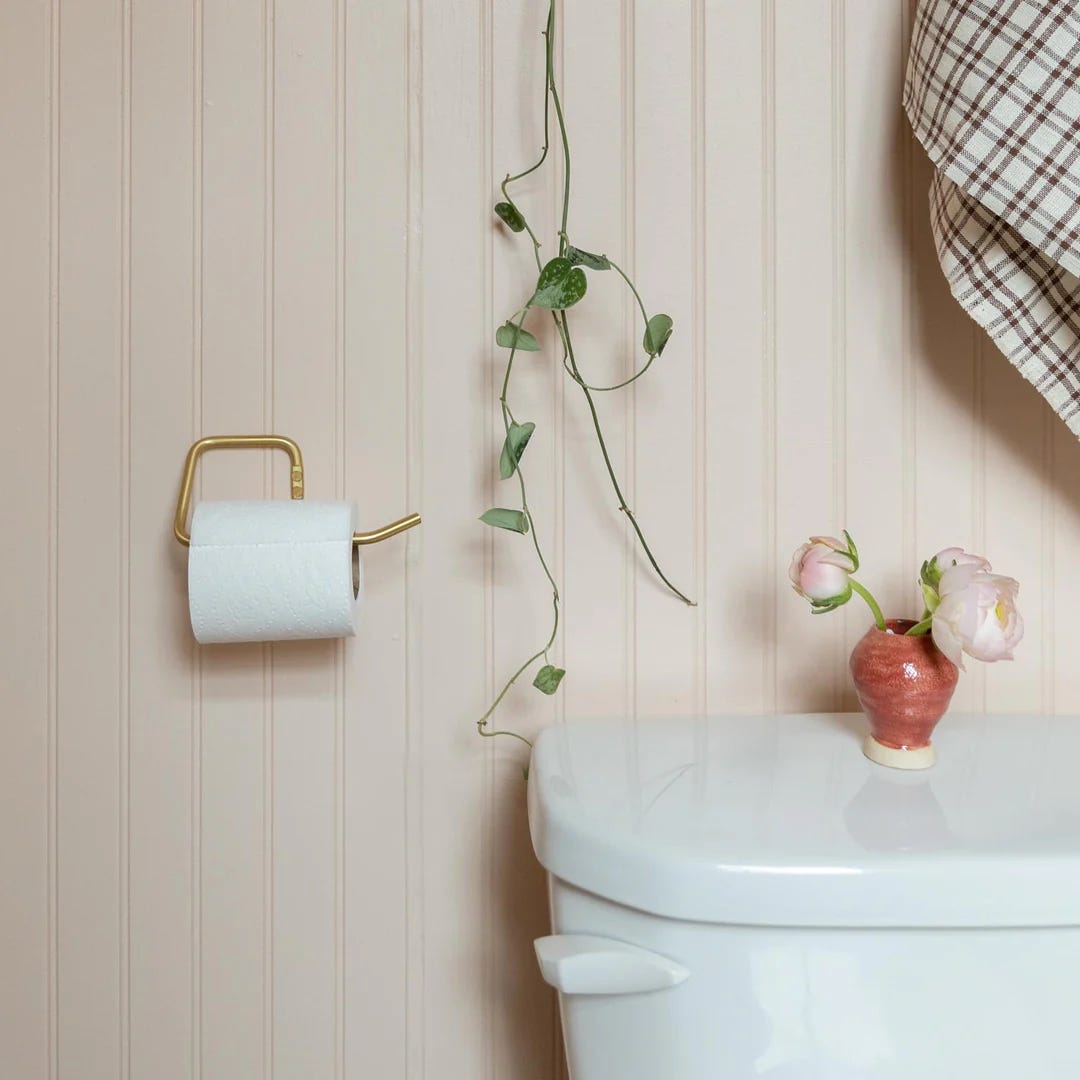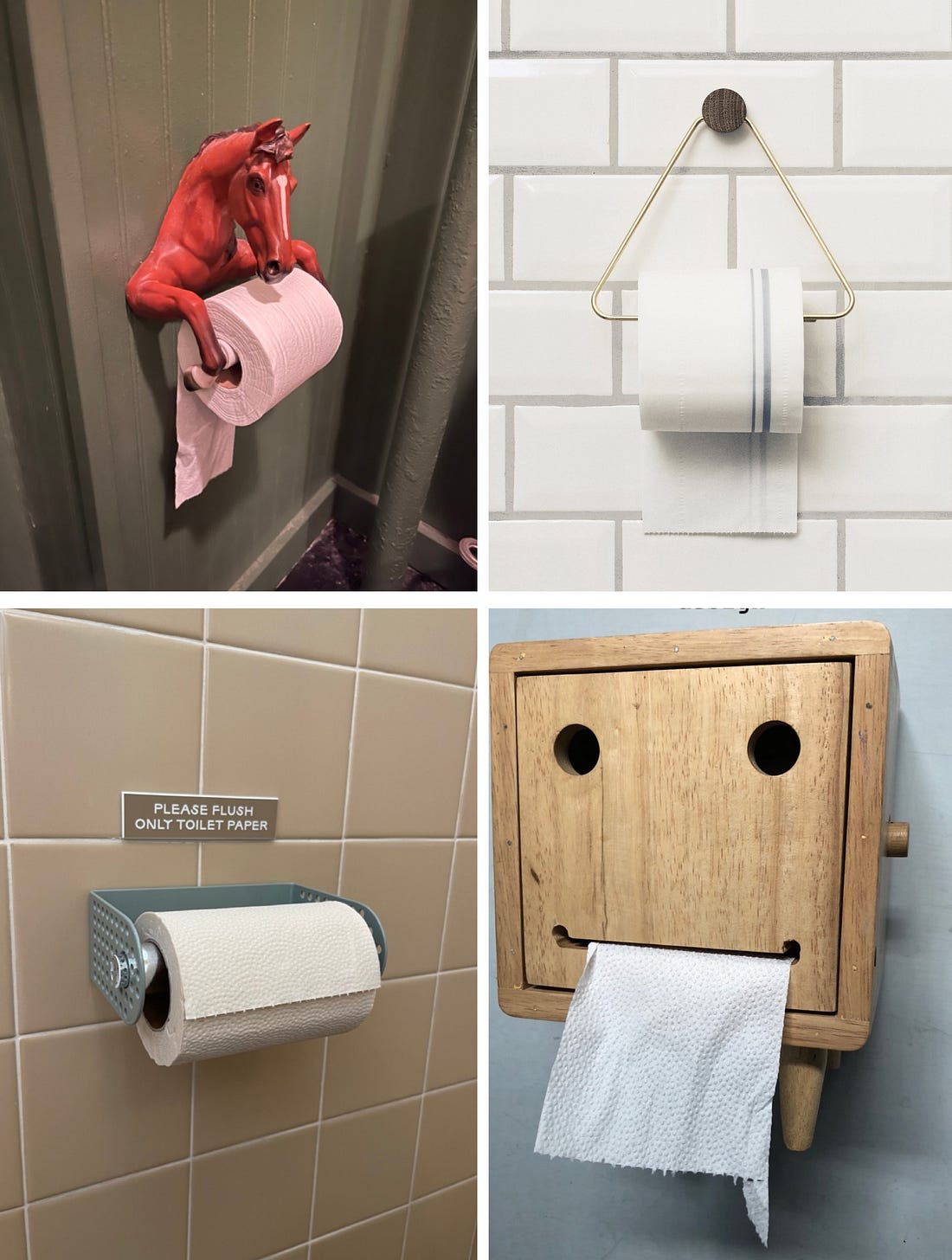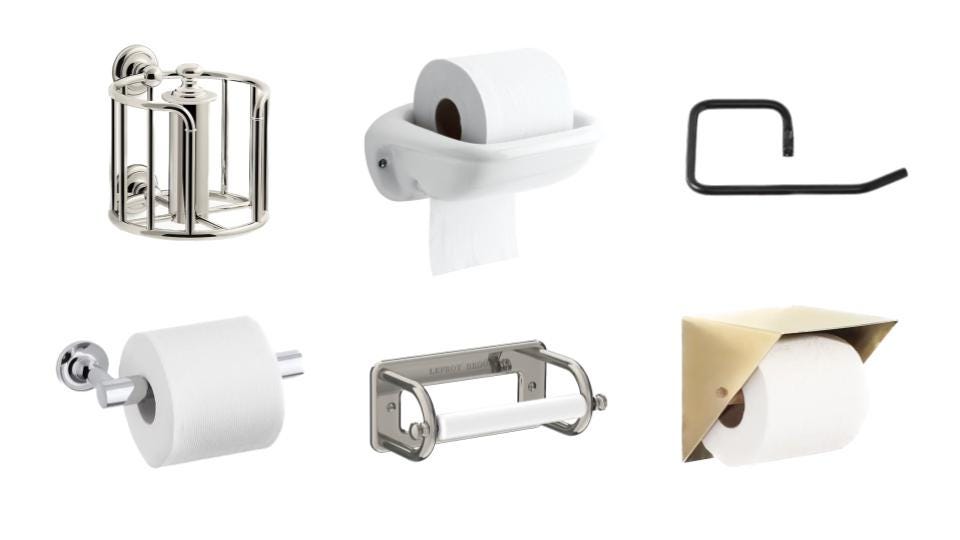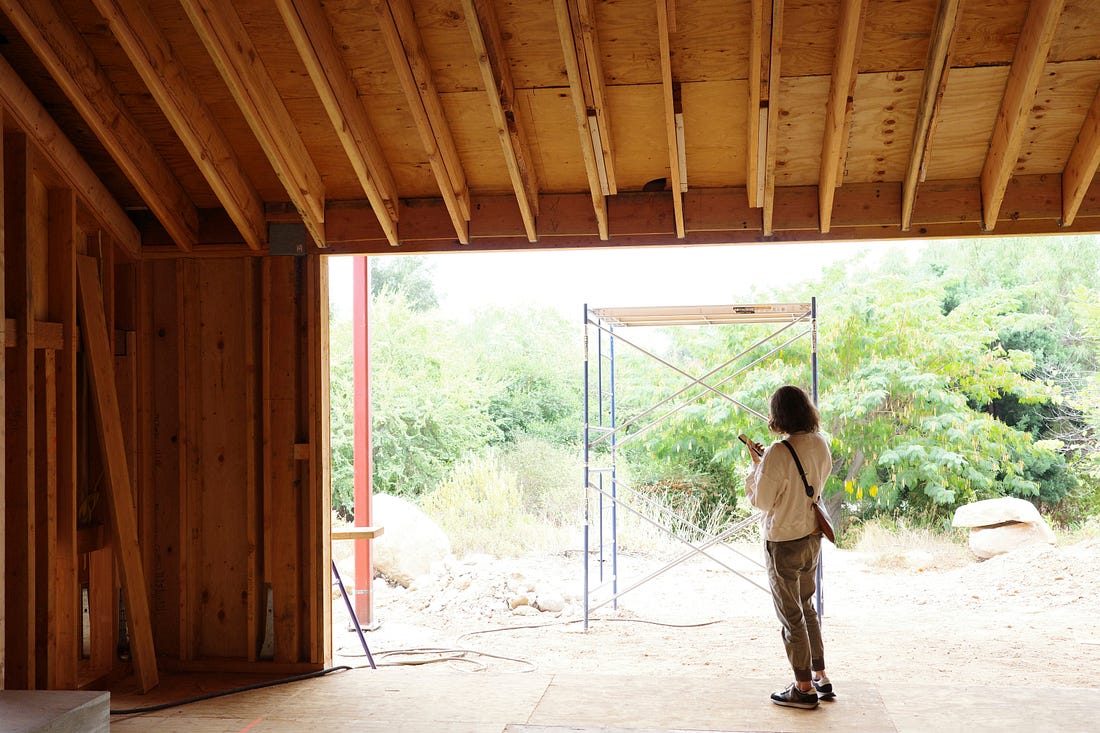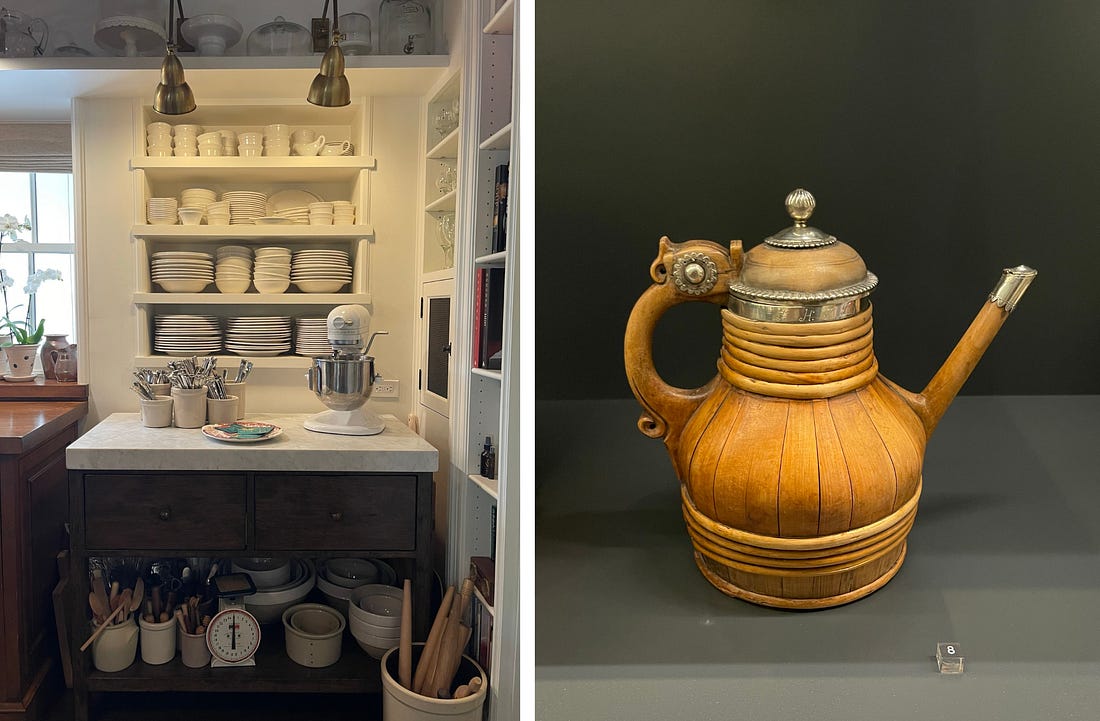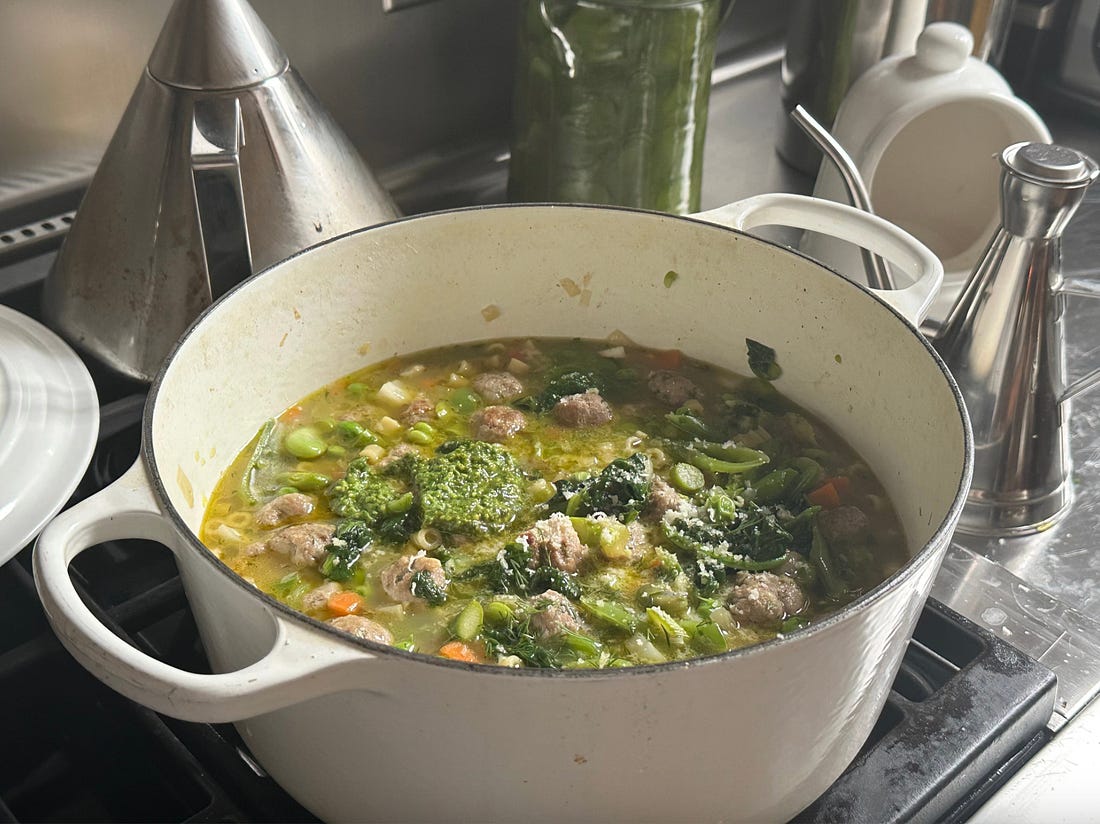Your look back at April—and the design feature I'm fixated onLet’s catch up on a very full (first!) month.Hi All! Today is my first free monthly post, a milestone. I didn’t know how this whole Substack game would go, if anyone would read it after the first inning or two. A month in, there are loads of subscribers, both paid and free—hereafter known as Homewardians—and I’m grateful for you all! The comments and chats are flourishing, and you’re all very affable and polite… on the Internet, who knew?! If you’ve got feedback—topics you want me to cover, posts that aren’t your thing—let me know in today’s comments, or dm me. We’ve all had the experience of learning a new word and then feeling like it’s showing up everywhere—the Baader-Meinhof phenomenon, or the frequency illusion. This is different from when you say something about pillows and suddenly Instagram starts serving you up pillow ads and pillow content. That’s known as the Creepy Big Brother™ phenomenon. The Baader-Meinhof phenomenon amps up once you start renovating a house. As you consider maple drawer pulls, you start seeing them in AD photo slideshows, noticing them at the clothing store you just went to, popping up in your dreams as a feature in your grandmother’s house. Since we bid on our house in Ojai, my obsessive brain has been hopscotching from one feature fixation to another, from outdoor lighting to wood paneling to carafes. Each deserves exploration here, and I’ll make my way through them all in future posts. I’m starting now with toilet paper holders. Yeah, I know. Weird one. But they’re something you use every day, if not multiple times a day, so why not make them a small, good thing? A lot of people believe that the domestic basics (outlet covers, doorknobs, cereal bowls, etc.) are fungible and not worth spending time or money on. I’m not one of those people, and my guess is that most of you aren’t, either. I think every decision in life matters, especially ones whose consequences you see daily. Buy things you’ve spent time thinking about, that mean something to you. A belonging doesn’t have to be an expensive or rarified design, but it should please you in some way. Toilet paper holders are top of mind because on the same day last week that I received confirmation that one of the tp holders for our Ojai house had finally shipped, I saw this very different, very entertaining horse-shaped one at Pitt’s, a great new restaurant in Red Hook. Restaurants and hotels are excellent places to catalog bathroom hardware. My iPhone photos are rife with hospitality-industry faucets and toilet paper holders. Toilet paper holders in well-designed (but not expensively designed) restaurants are of two types: highly expressive artisanal—ones that would prefer to call themselves “tissue paper holders” (I will deny them this desire until the day I die)—and mid-century institutional. Bridges in Manhattan and Rory’s Other Place in Ojai both use inexpensive chrome recessed toilet paper holders of yore, presumably so they can afford better lighting and door knobs (Rory’s) or tile (Bridges). A new respectably utilitarian style of toilet paper holder (did I just type that?) is with a shelf. For your phone, obviously. We will have one of these in Ojai. Here’s another design. I’m not a fan of toilet paper holders that:
Here’s what I do like in a tp holder:
Toilet paper tangent: I’ve interviewed a lot of job candidates in my career, and for fun, I like to think about interview questions that will reveal a person’s character without giving them room to bluff. A new question I’d like to ask (and which HR would definitely NOT be in favor of me asking) is: You’re in a public bathroom and the toilet paper runs out. There’s a spare roll. What do you do? There’s only one correct answer if you want me to hire you: You install the spare roll in the toilet paper holder and throw away the spent cardboard tube. Bonus points if you note that the paper should feed from the top, not the bottom. I can’t count the number of times I have replaced the toilet paper in public restrooms. Anyone still with me? Hello?! The Look-Back: April At night, when I’m in bed, I imagine walking through the rooms of our new house, trying to picture every detail that we’ve decided on so far. Thinking about spaces is meditation for me. I’m excited to show you these actual spaces, and excited to get to see them in person myself, once the house is complete. While I wrote about finding our Ojai house just last week, our project is actually much further along. I’ll be catching you up in the coming months, but not necessarily in chronological order. Because life goes in loops and twists and rarely a straight line, right? This past month, I set the stage: I wrote about my childhood home, and my parents’ heroic efforts to transform it (plus, a classic recipe from my mom, Judy, who I’m visiting this week). I also asked you what it was about your childhood home that informs how you live now. Here are a few of the dozens of great stories you shared: “The house I grew up in was built in 1969. My parents liked the model house next door and gave the realtor a $5 deposit! It was groovy, ’70’s avocado green & yellow and had high-pile shag rugs. My bedroom was hot pink with a brown shag carpet. It sparked my love of a colorful home!” - Jacquelyn Rezza “My dad redid the interior (and exterior) of my childhood home. I learned how to use indirect lighting for a cozy feel; and how to use unusual materials to add texture and color. I also learned how to hang art for maximum impact (my dad was a VERY pro photographer) and what fabrics and wallpapers could be used as accents, without spending a fortune on doing a whole room. He made amazing light fixtures, such as the enclosed spotlight that hung over our dining room table, and is a feature of many restaurants now (60 years later).” - Nancy L. Hoffmann “My parents bought a gorgeous older home that needed a lot of fixing up in a sought-after area of Atlanta in the ’70s. We spent weekends scraping and repainting banisters and tearing down wallpaper. We never did finish fixing up that house, but we absolutely loved it. We had one a/c wall unit downstairs, and in the summer when it would get insanely hot we'd all congregate around the unit (fortunately the upstairs had central air, though it did have radiators instead of heat). The funny thing is, my sister and I must have subconsciously decided we never wanted to fix up a home again and both of us have only ever bought new construction as adults. But that home still has so much meaning to me. And I only live about four miles from it and drive by every time I'm headed to my Mom's. It brings back such warm, wonderful memories.” - Lisa Schreiber “My parents bought a place they had expanded around 1962 to bring me back to from the hospital; I was the last of four. It was five blocks from the ocean, so full of sand throughout the year. It was torn down when my parents sold it, sadly, but it lives on in my memory. It was in La Jolla. I now live up in the SF Bay Area. Some years back while at Heath Ceramics, I had a sudden realization: My mother, who had worked at Gumps in college, the first department store to carry Heathware, seems to have drawn a lot of inspiration from the Heath Factory in Sausalito. The aha moment came when I went there and saw the same brass doorhandles as we had, and the same jalousie windows, the same dark beams on the outside, and some of the same entryway dimensions. As a result I love going to Heath (and have a Heath tile wall in my kitchen that is a kind of tribute to mom, my house, and my mid-century origins).” - K. Relf-Canas I wrote about how I knew I was ready to make a big change in my life and the tools I use (as a self-described serial life improver) to start putting ideas into action. I confessed that New York has become a place I associate with relentless work and that I needed a place unencumbered by such stresses. Afterward, a friend emailed me to say that finding a new place to live, “‘unscarred by associations with decades of hard work’ really resonates with me.” If you, too, are feeling this way, it may be time to start plotting your next phase. I walked you through our effort to figure out where to look, and, once we settled on Ojai, north of L.A., what factors we prioritized—alongside invaluable advice from our real estate agent (and a bonus list of California culture recs from Tad). You all shared things to look out for when searching for a home, too. I also gave you a tour of the Château du Feÿ, a very old house I lived in for two years in the ’90s that was the setting for my first book, The Cook and the Gardener, which has just been re-released after 25 years in print. The property forever changed me and continues to inspire how I care for a home. In a fun surprise, a few days later the chateau popped up in the New York Times, in a piece celebrating its reinvention as a creative commune. Coming Soon
Yours in May adventures, Amanda
|
Friday, May 2, 2025
Your look back at April—and the design feature I'm fixated on
Mom’s the word.
Served with love (and bagels). ͏ ͏ ͏ ͏ ͏ ͏ ͏ ͏ ͏ ͏ ͏ ͏ ͏ ͏ ͏ ͏ ͏ ͏ ͏ ͏ ͏ ͏ ͏ ͏ ͏ ͏ ͏ ͏ ͏ ͏ ͏ ͏ ͏ ͏ ͏ ͏ ͏ ͏ ͏ ͏ ͏ ͏ ͏ ͏ ͏ ͏ ͏ ͏ ͏ ͏ ͏ ͏ ͏ ͏ ͏ ͏
|
Subscribe to:
Posts (Atom)

